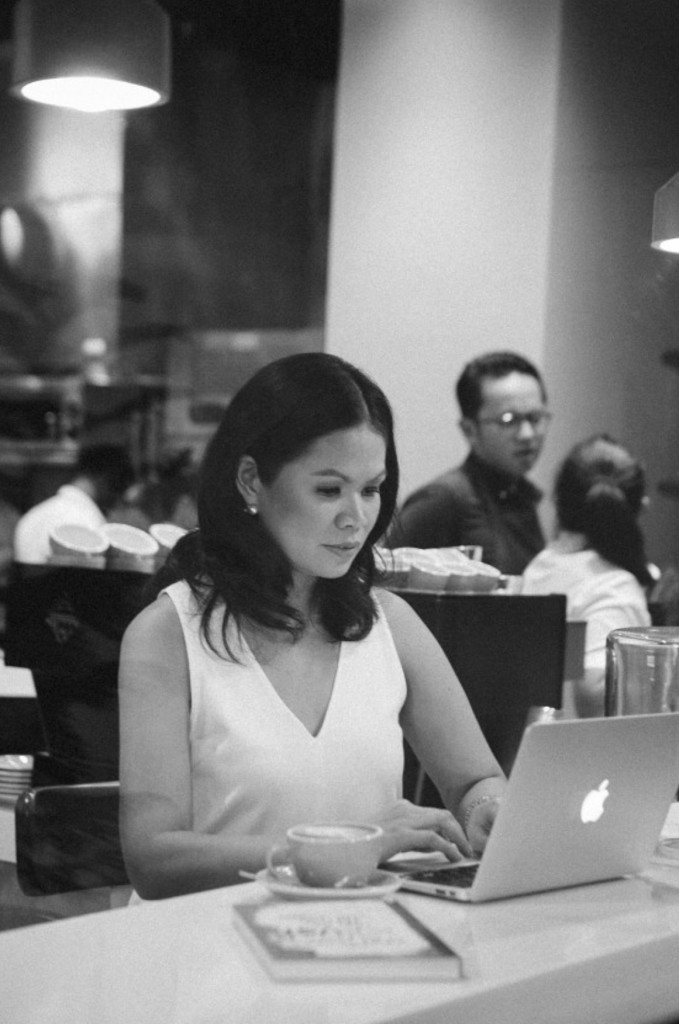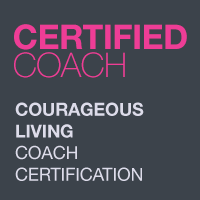
Part two of my life coaching journey is the reality of running a coaching business. (Warning: this is another long one.)
After training to be a life coach, it took me about two years before deciding to do it full-time. I was coaching while having a standard 8-a.m.-to 6:30-p.m. corporate job. When I left that position, I took on a part-time consulting job.
The decision to do this full-time wasn’t easy. The question I asked myself: How would my business transform if I gave 100% of my effort to it?
Another question: If I didn’t try, would I regret it? (The answer: 100% yes.)
So I cast off the safety of a monthly salary and annual bonuses and decided to follow what I knew in my heart to be true: it was time to stop making excuses and start the business I had been dreaming about and training for my entire life.
Maybe this post needs to be written 10 years into my business instead of four years. Or when I feel I have reached my idea of success which is the first lesson I wanted to share.
1.Defining success
Success, when I first decided to become a full-time coach, meant matching the salary I had in my corporate job. Here’s what I forgot: it took me 16 years to reach that salary. I couldn’t expect it in a company I was only running for a few years.
I also realized that, like many of us, my worth as a person was closely tied in how much money I was making. The more money I earned, the more I deserved to be here in this world.
I had to do a lot of work to believe, not just as a theoretical idea, that I was already worthy just as I was. I had to believe that who I was, my value, my power were not determined by my salary, bonuses or revenues. I had to learn it through understanding my relationship with money and success. I had to let go of many ideas that were ingrained in me throughout my life.
Success for me now means doing what I love and making enough for our needs and wants.
2. Defining enough
This leads me to the idea of enough.
The language I see on social media doesn’t recognize the idea of enough. We’re a society who “hoards” and “enables” shopping influences.
What I’m learning in this journey is to recognize what is enough for me. This includes not just immediate needs but also plans for the future. This means yes to saving but no to hoarding. It means knowing where my money goes but not limiting myself. This means recognizing flow—the idea of money going in and out and that’s the way it should be. It is realizing that we live in an abundant universe and I don’t need to hold on tightly to my resources because there is more than enough.
When I don’t know what is enough, I set arbitrary targets and increases for myself which leads to fear-based decisions rather than driven by sustainability and value.
3. Defining metrics that matter
I used to dread KPI-setting meetings with my boss. (KPIs are key performance indicators, or the metrics by which your job performance are measured.) They are usually based on the company’s performance last year and the expected results of your proposed plans. It feels like an exercise in futility because so many things can affect these plans which were also based on past information.
Did I do away with KPIs all together when running my own business? I wish I could. But I’m still a creature of my training and this was one of the practices I wanted to keep from the corporate world.
I used to track conversion rates—how many people became long-term clients from a Discovery Session. There are also acquisition costs (or how much I spent on marketing to get a client).
But now, my metrics are simpler. I ask:
- Did I make enough? (This means tracking my revenues and expenses ruthlessly.)
- What actions have I taken that are aligned with my intention for the year?
These are my personal KPIs for my company of one (one employee: me; one boss: also me). You might need to create your own KPIs based on the realities of the needs of your company and the industry. What’s important is to ensure that the metrics are meaningful for you and your team, that they are aligned with your values and are based on your future plans rather than just arbitrary targets.
4. Deciding on opportunities
I realized that when you put yourself out there and declare your intention for growth, you will be a magnet for opportunities.
How do I evaluate these opportunities? Do I say yes to everything because of the idea that these opportunities might never come again?
I use a framework that I propose in the Mindset Map workshop I do for companies. I do a quick check if this is aligned with who I am and the person I am becoming. I also ask my future self—if I work on this project in the next six months, will I continue to be excited about it? Lastly, I ask my intuition: Would I love to do this?
In saying yes to something, I know that I will need to give up something. And that could be something intangible—like the time I need to come up with creative ideas and execute them or time spent with family or doing hobbies that bring me joy and pleasure.
5. Defining motivation
The best part about running your own business is that you have no boss. The worst part about running your own business is that you have no boss.
Without a boss, it was difficult at first to find the motivation to do the things that would move my business forward. It was easier to plop down on a couch and read books on business strategy or watching Youtube videos to further my learning which I realized was just fear disguised as procrastination disguised as perfectionism.
Here’s what helped me get moving off the couch and start working on my goals:
Process
I put aside my moods and created a process for marketing, reaching out to clients, onboarding them and following up. It didn’t matter whether I was scared or uncomfortable. It didn’t matter if I was in the mood or not. Every day, I would show up and work the steps needed to do to put myself out there, make myself known and find people who I wanted to work with.
At the start, this meant “busy work”—doing things just for the sake of doing things. But that’s an important part of the process. I would try things (like blogging, social media scheduling and making Facebook ads) and learn whether they worked or not. I would do things because they sounded fun and interesting—my early collaborations with other women I admired. Following what worked for other coaches was another thing I did, like setting up automation sequences for my email lists. After a while, I would evaluate and cut out what wasn’t working.
Schedules
Part of a process that works is creating a schedule for them. Some people set themes per day: Marketing Monday, Client Tuesday, Reaching out Wednesday, Proposal Thursday and Creative Fridays. Or others would do it by the week—doing client work during the first two weeks of the month and then spending the next two weeks to do deeper work for business growth.
My schedule works for the way I work. I start the day with email (doing follow-ups on collaborations, reaching out to clients, answering questions). The afternoon is for creative work—writing and doing brain dumps for all the products that I will be launching (workshops, journals, books). Early evening is for client coaching.
This rhythm works for me—and one of the best things about having no boss. I can make my work a dance with my day rather than hustling, forcing and powering through.
Meetings with my “boss”
My last tool is a fun one. When I was struggling to reach my targets, I put on my boss hat and requested a presentation from my employee for a plan. As the only employee, I did my research and analysis and created a Powerpoint presentation to explain the gap between the targets and results.
Creating a presentation provided clarity. When I looked at my performance with the eyes of a leader rather than from someone in the trenches who was doing the day-to-day work, I was able to see which processes were working, what I had to add or let go and what was realistic and important in achieving my goals.
6. Defining productivity
Productivity for my business means the least amount of effort for maximum results.
This is completely different from my employee self and one I struggled with during the early days. It was ingrained in me that the harder you work, the better your results.
But when I started this business, I knew that I was ready to let go was my go-getting and stressed self.
What I was ready to embrace were the ideas of ease sand joy and knew that both tools were compatible with business growth.
What I did: I used and paid for tools that made running my business a pleasure. As much as possible, everything is automated or has a template—especially session follow-ups and reminders (both tasks that I completely do not want to do). This includes scheduling software, journal purchases and email inquiries. I write down all my to-dos in my actual planner. I also do weekly check-ins in The Sunday Night Journal to make sure that I complete my priorities and that they are the right ones.
This allows me a business that I continue to find fun and fascinating. It is a business that I can quickly pivot or where I can find creative solutions to obstacles and challenges.








Thank you for sharing your experience. I find your article inspiring being a coach myself and currently building a coaching business. Wishing you more success in your endeavor.